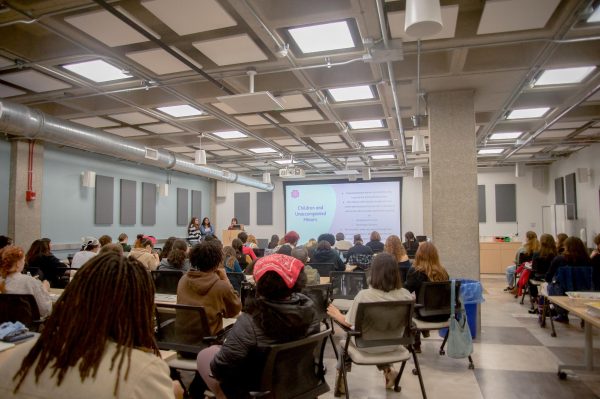Art Rental Program Has Students’ Best Interest At Heart
The Art Rental program at the Allen Memorial Art Museum has, for the past 80 years, been an important aspect of the AMAM’s offerings and a cherished tradition. Hence, it was with great interest that I and other museum staff read the opinion piece “Art Rental Needs to Address Accessibility Concerns,” published in The Oberlin Review Feb. 14, while noting with dismay that many fewer students than normal took part in Art Rental on Feb. 15, leaving the museum with 86 unrented works out of 395. Last September, following advertising by the Art Students Committee, approximately 35 percent more students than average came to the event, with those at the end of the line going away empty-handed (“New Approach to Art Rental Attracts Record Number of Students,” The Oberlin Review, Sept. 20, 2019).
As ever, the AMAM maintains a democratic first-come, first-served practice regarding Art Rental. When the doors open at 8 a.m., those first in line enter; this continues until no more people wish to rent, the works are all rented, or until noon, whichever comes first. Over the years, modifications have been instituted to improve access to the program for all students.
Years ago, Art Rental occurred on a weekday; it was moved to Saturday so as not to compete with classes. More recently, the AMAM made images of most of the works available online through our eMuseum database, so that anyone may preview them. Before the arrival of card access — which now allows students self-access to the Clarence Ward ’37 Art Building — each February, Campus Safety officers opened the building so that those who wished to arrive Friday night could stay indoors. And about a year ago, to facilitate students’ installation of their chosen works, the AMAM began providing different types of hanging hardware suited to the various College residence walls.
We understand that one of the biggest concerns the ASC has expressed is a lack of knowledge among other students about the program. We would be glad for feedback on how to ameliorate this, as the AMAM already advertises it via our website and social media, the OC Events Calendar, and the Campus Digest. We also note that while dedicated students have always been first in line when the doors open, an important aspect of the program is that it is open to the entire Oberlin community.
At 10 a.m. last Saturday, when there was no line and a few Oberlin city residents had already rented, 150 works remained, including by such artists as Kollwitz, Oldenburg, Rosenquist, Rouault, and Stella, along with manuscript leaves, Chinese calligraphy, and Japanese prints. Some students who arrived later expressed frustration with what they perceived to be a complicated process of list-making and check-in times, noting its complexity may have kept away others. We acknowledge the commitment and creativity of the ASC and applaud their interest in making the wait for the doors to open more fun through such activities as a costume contest and screen-printing, as well as the provision of warm beverages. We also thank them for including, on the poster they produced about the list and in the check-in process, the comment “you can still arrive mid-morning and (most likely) still receive artwork.”
But we wonder if this semester’s check-in system unintentionally made participating in the program appear more onerous. We would humbly put forth that students might simply do what many generations before them did: Those who are super-motivated to be among the first in the building arrive as early as they wish with fellow Art Rental die-hards, preserving the camaraderie the writers of the Feb. 14 Review article rightly note occurs, while those who want to rent but are not as motivated to be among the first in line arrive Saturday morning and simply take the next spot. The die-hards may wish to self-create a list, memorializing their order of arrival.
The AMAM does not want to get into the minutiae of list creation now, anymore than it ever has — which is never. But the process above is what seems to have worked for many years and accords with our commitment to making the program open to all through our first-come, first-served practice.
A key aspect of the program has been that renters may rent two works. Each September, with the excitement of the new semester — and for first-years, the newness of the program overall — as well as relatively nice weather, the collection routinely sells out. In February, however, works are almost always left over. Given that, and the additional time (double for choosing, registration, and wrapping) and cost (double for the wrapping materials) that would be incurred in allowing renters only to rent one work at a time, the museum does not plan to make a change to the two-work limit at this point. Last week, by 10:15 a.m. with no line, we allowed three works to be rented, and with 100 works left at 11 a.m., up to four.
In conclusion, we simply note that though the opinion piece stated that “Art Rental … is completely student-run,” it is only the recent phenomenon of creating and managing a list that is student-run. The program itself, for 80 years, has been run by AMAM staff. All of us at the museum thank both the writers of the recent piece and the ASC; we know they feel passionately that Art Rental is an important Oberlin tradition, and have the best interests of the program and their fellow students at heart — sentiments with which we heartily concur. We look forward to working with students and other community members to make sure that everyone who wishes to participate can do so.




